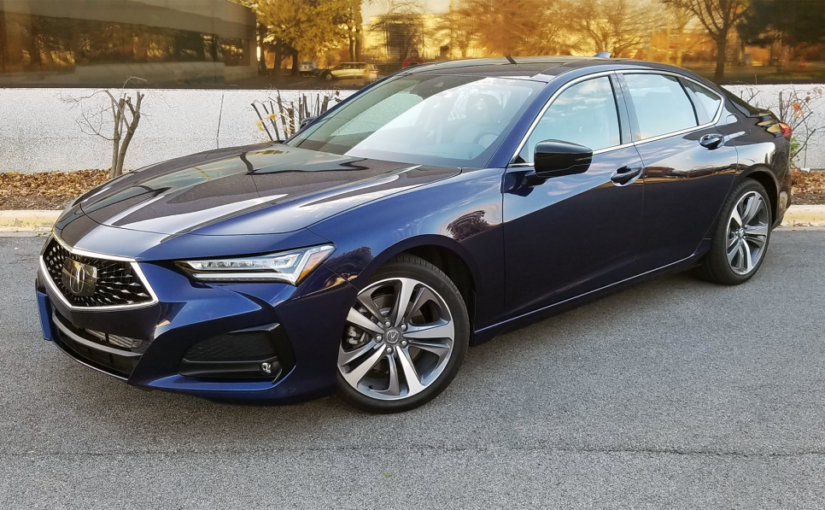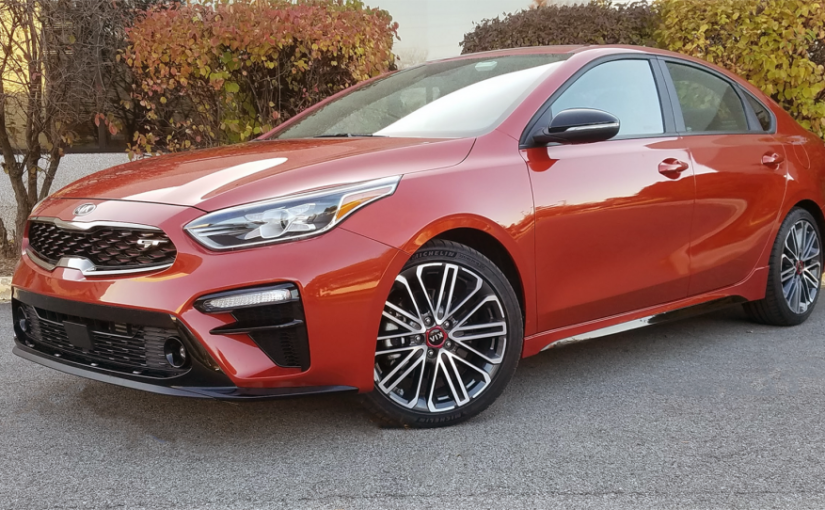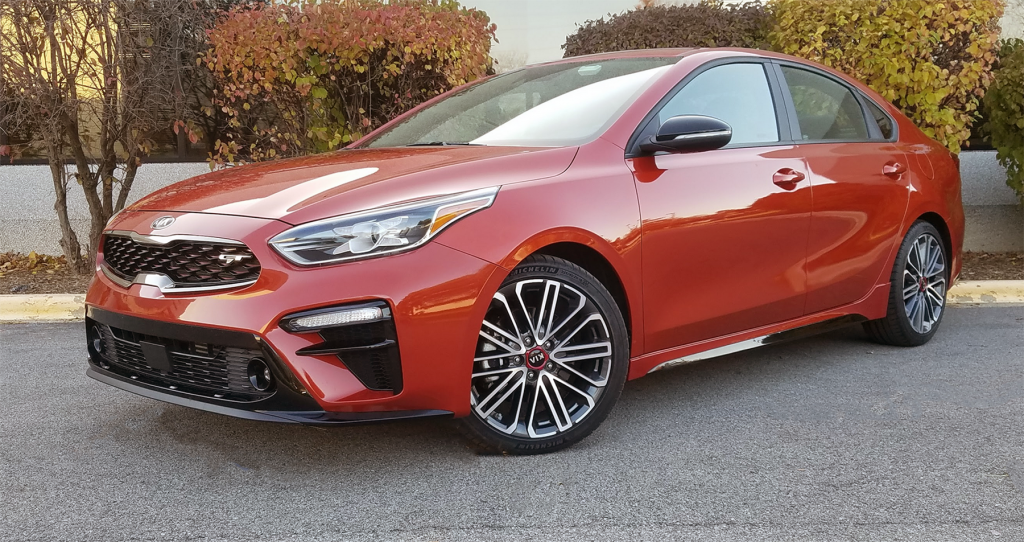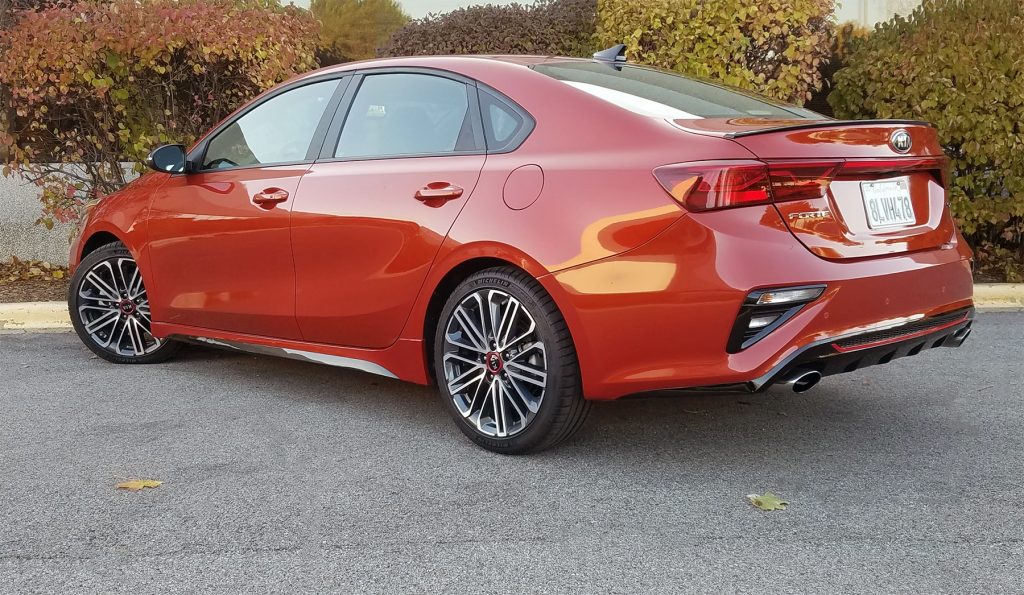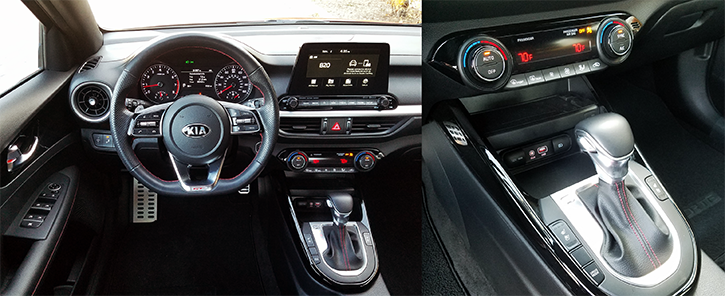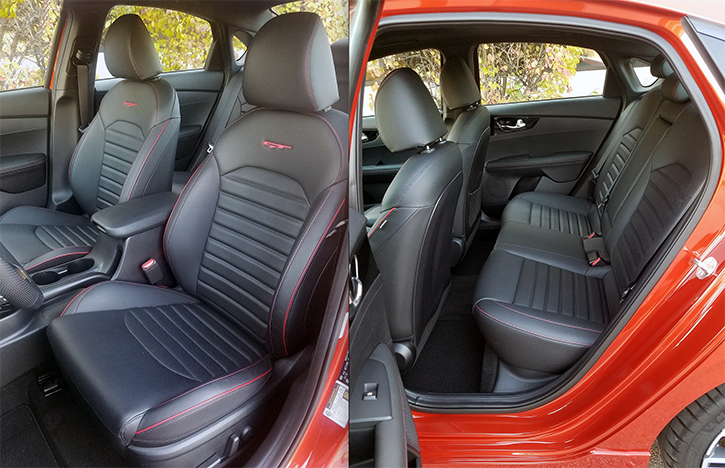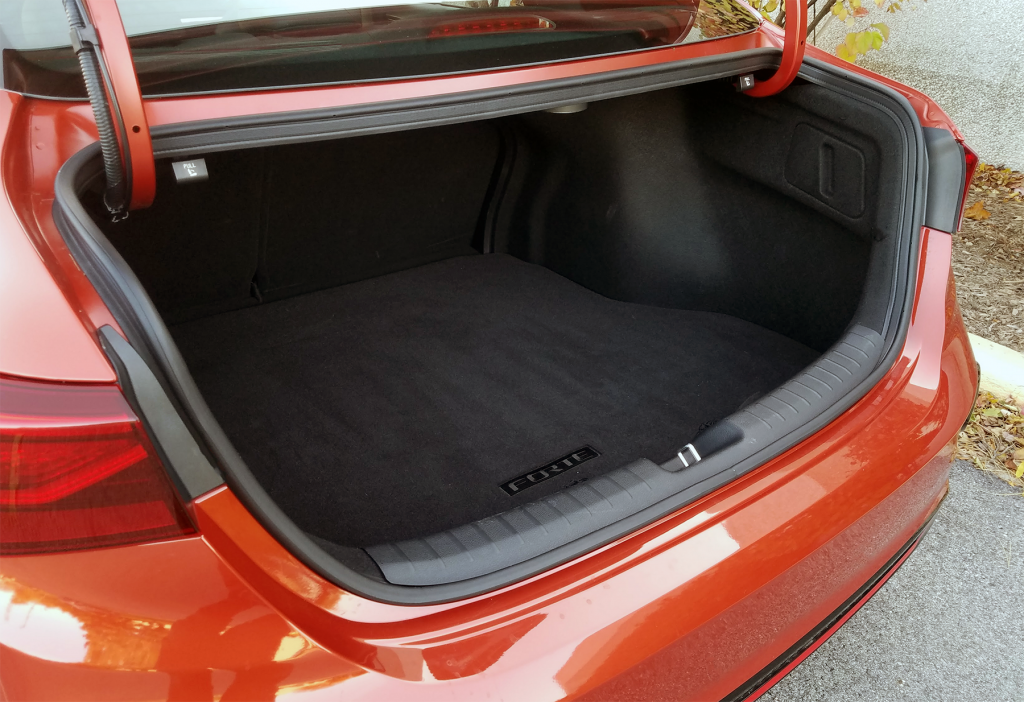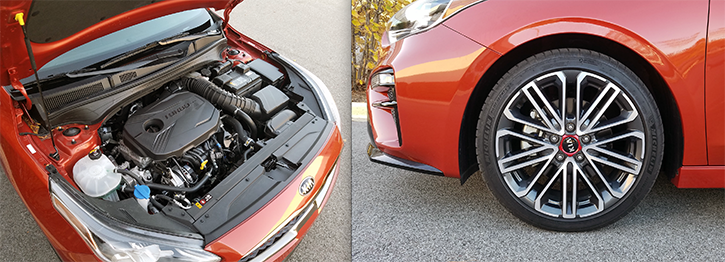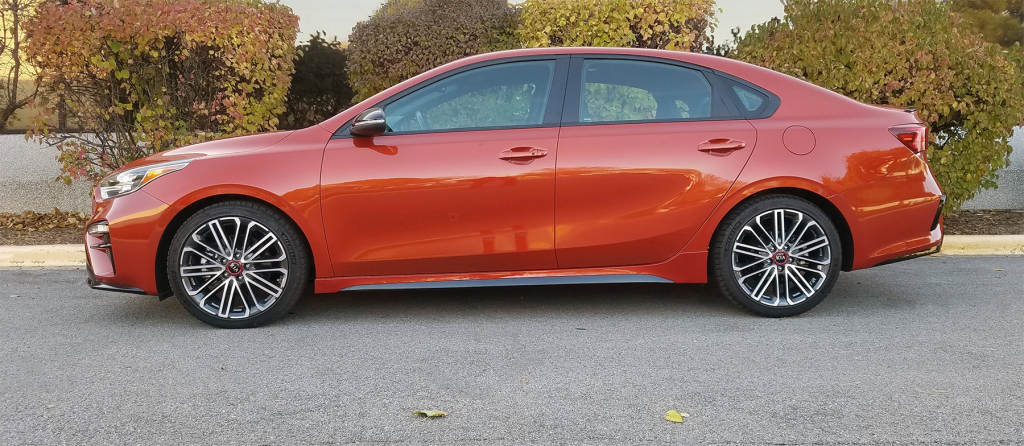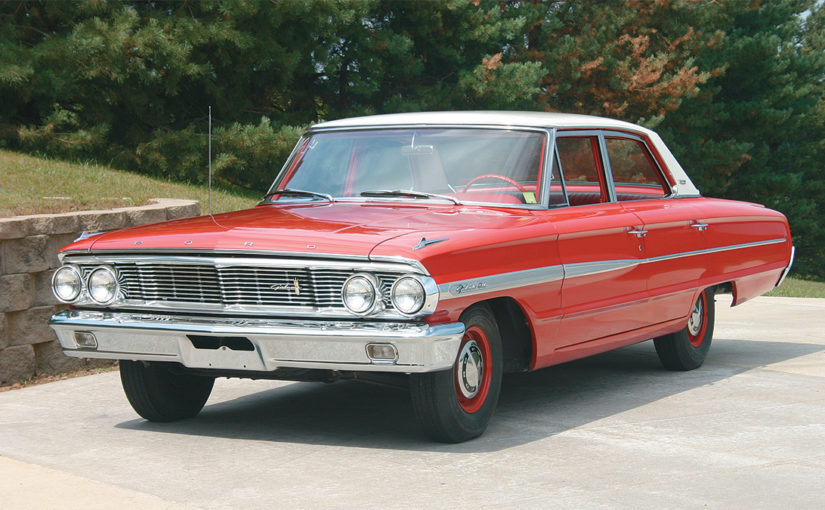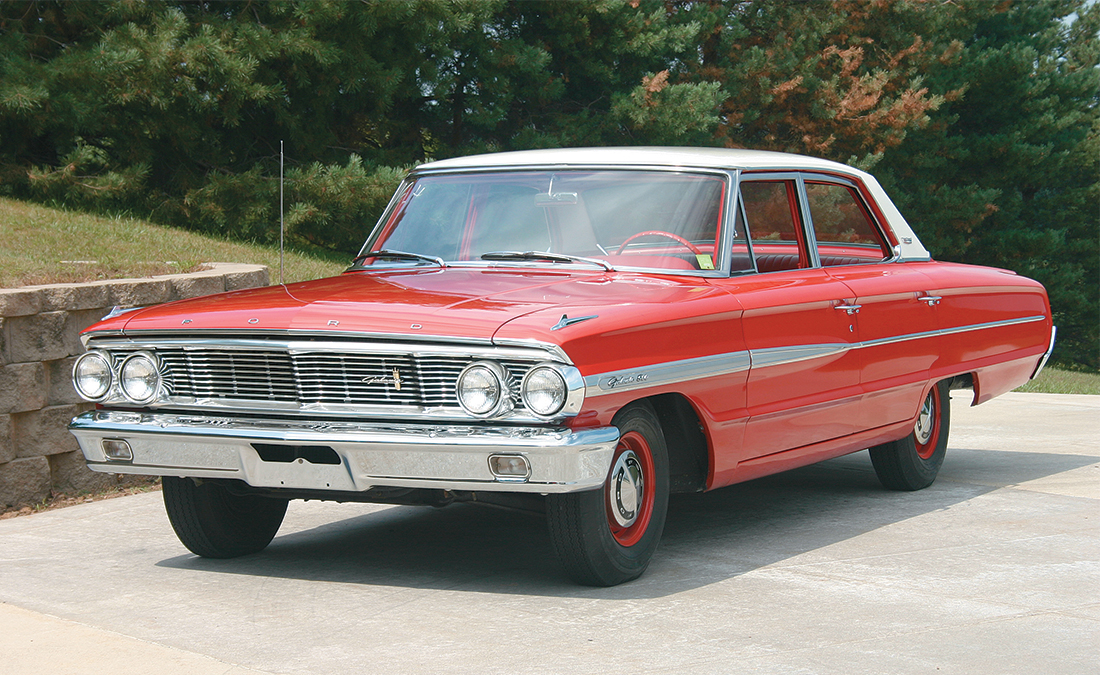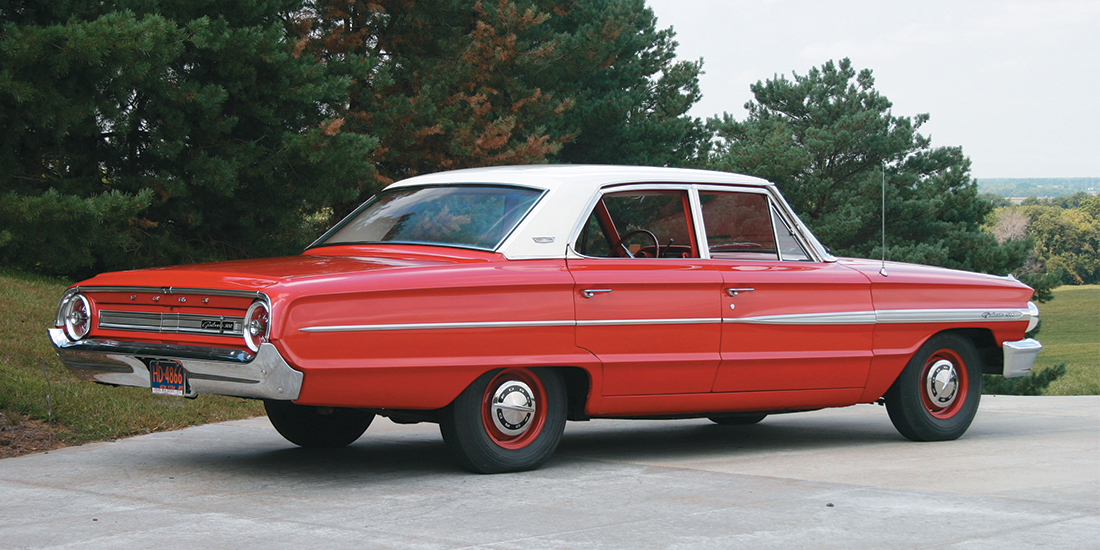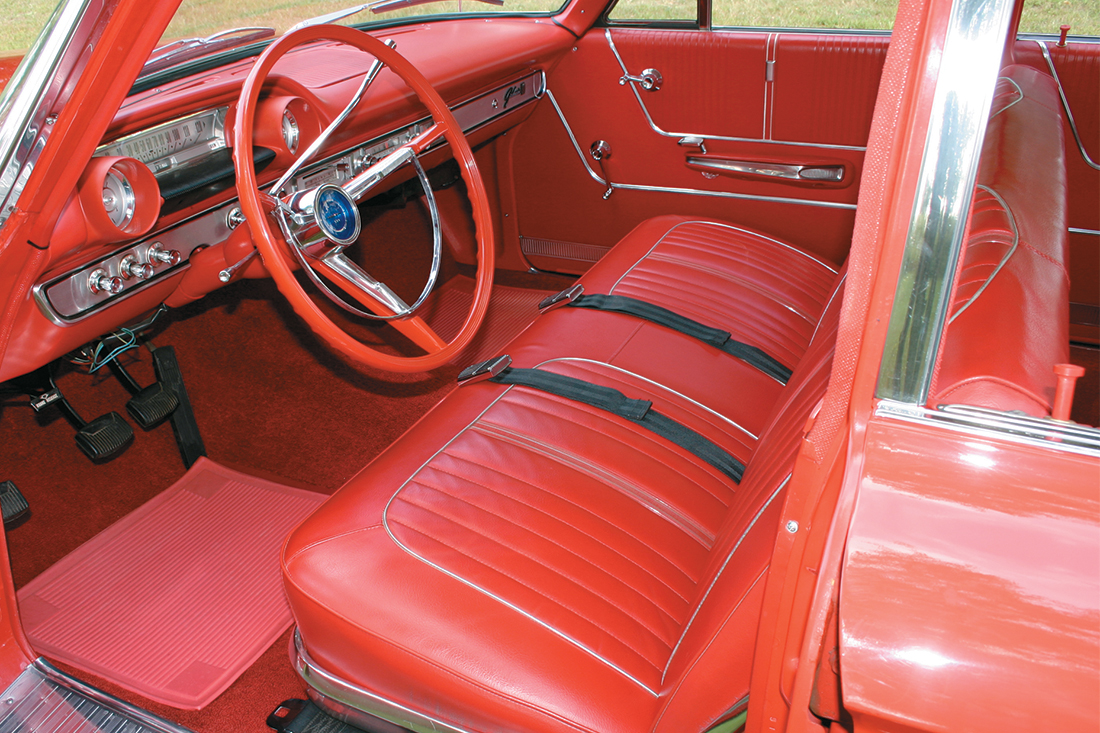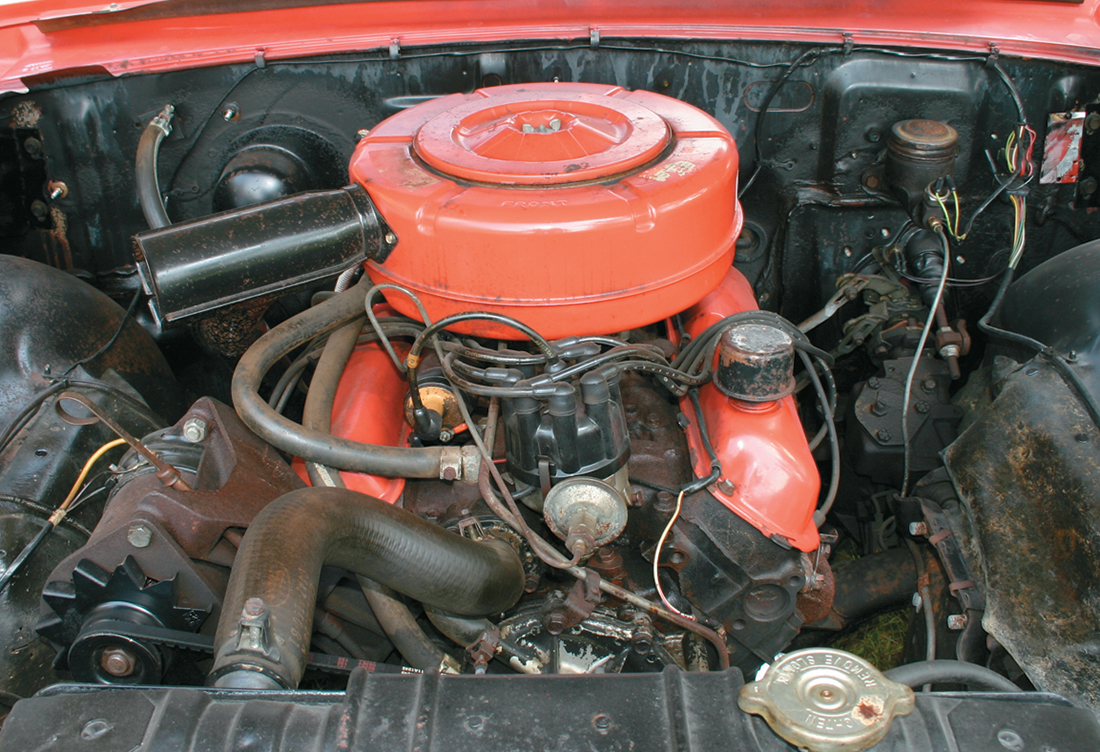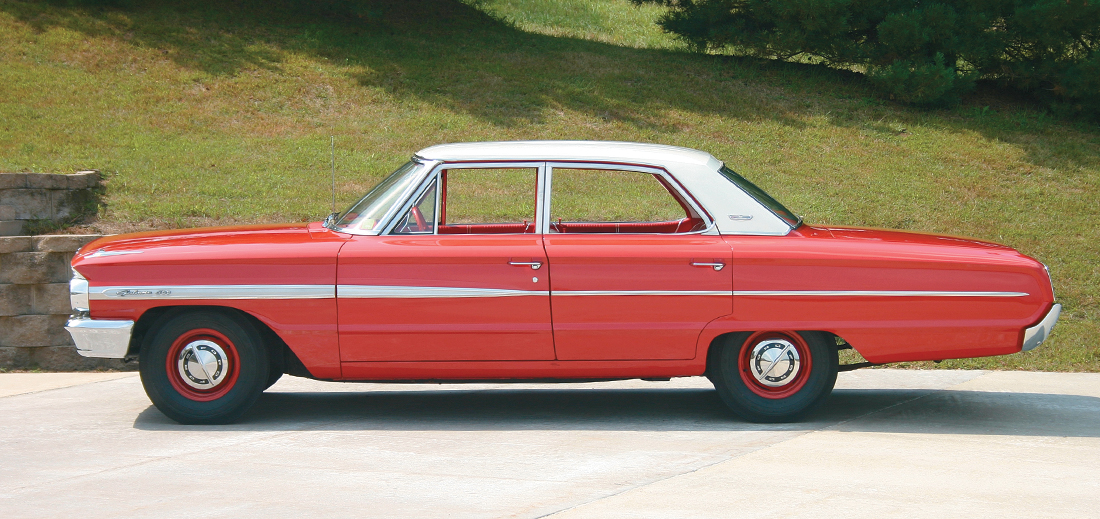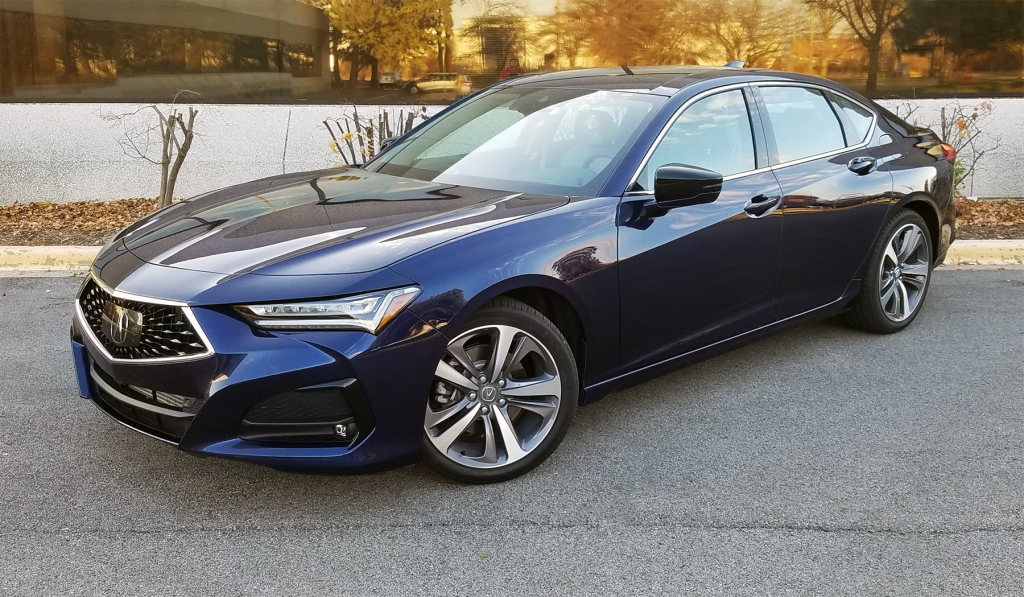
2021 Acura TLX SH-AWD Advance in Fathom Blue Pearl
2021 Acura TLX AWD with Advance Package
Class: Premium Midsize Car
Miles driven: 180
Fuel used: 8.9 gallons
| CG Report Card | |
|---|---|
| Room and Comfort | B+ |
| Power and Performance | B |
| Fit and Finish | A |
| Fuel Economy | B- |
| Value | A- |
| Report-card grades are derived from a consensus of test-driver evaluations. All grades are versus other vehicles in the same class. Value grade is for specific trim level evaluated, and may not reflect Consumer Guide’s impressions of the entire model lineup. | |
| Big & Tall Comfort | |
| Big Guy | B |
| Tall Guy | B |
| Big & Tall comfort ratings are for front seats only. “Big” rating based on male tester weighing approximately 350 pounds, “Tall” rating based on 6’6″-tall male tester. | |
| Drivetrain | |
| Engine Specs | 272-hp 2.0L |
| Engine Type | Turbo 4-cyl |
| Transmission | 10-speed automatic |
| Drive Wheels | All-wheel drive |
Real-world fuel economy: 20.2 mpg
Driving mix: 60% city, 40% highway
EPA-estimated fuel economy: 21/29/24 (city, highway, combined)
Fuel type: Premium gas recommended
Base price: $48,300 (not including $1025 destination charge)
Options on test vehicle: None
Price as tested: $49,325
More Acura price and availability information
Quick Hits
The great: Classy, distinctive interior trimmings; nicely balanced ride and handling; generous list of comfort and technology features
The good: Respectable power from turbo 4-cylinder engine; smooth 10-speed transmission
The not so good: Rear-seat space is just OK; not as customizable as most class rivals
John Biel:
The Acura TLX is all new for 2021 and it is, Acura will have you know, its own car. No slicked-up treatment of a concurrent Honda, the premium midsize sedan is built on a body-and-chassis architecture that is exclusive to the brand. It does borrow a powerteam from the RDX premium compact SUV, but that represents a complete change from what powered the previous-generation TLX.
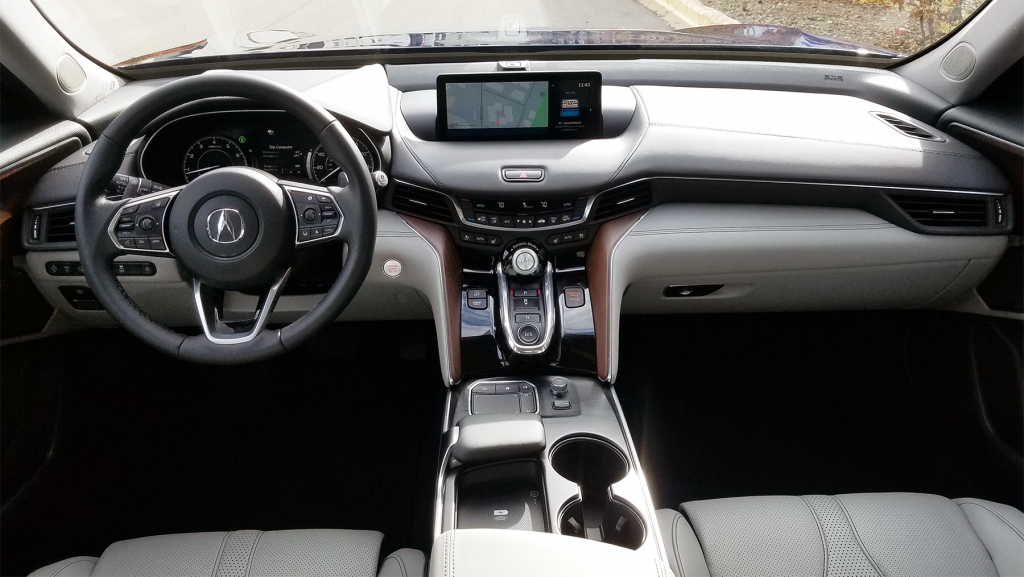
The sporty, sophisticated dashboard design is a TLX strong point. Sleek wood accents, satin-finish metal trim elements, and classy ambient nighttime lighting help provide a convincingly high-end ambiance.
TLXs come in four states of trim: base, with Technology Package, A-Spec, and with Advance Package. All are available with a choice of front-wheel drive or Acura’s “Super Handling All-Wheel Drive” (SH-AWD), the latter at a $2000 premium. A higher-performance all-wheel-only Type S was slated for a spring ’21 launch. Consumer Guide editors sampled an Advance with SH-AWD, a car that starts at $49,325 with delivery.
Test Drive: 2020 Cadillac CT4-V
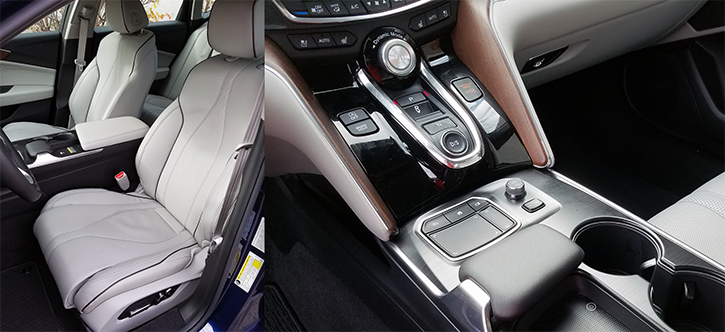
The TLX’s front row is spacious, and the seats are comfortable and supportive. The True Touchpad infotainment interface benefits from an ergonomically placed wrist-rest pad, but using the system requires acclimation and practice–and we’d also recommend getting a quick tutorial from your Acura dealer.
Wider by 2.2 inches and lower by 0.5 inch than its predecessor, the TLX is restyled with a longer dash-to-axle span to conjure up the look of a rear-drive sport sedan in what’s fundamentally a transverse-engine front-drive car. It is fronted by a wider interpretation of Acura’s “Diamond Pentagon” grille and “JewelEye” LED headlights. The hood, front fenders, and front bumper are part of the new model’s extensive complement of aluminum parts.
Quick Spin: 2020 Lexus ES 300h Ultra Luxury
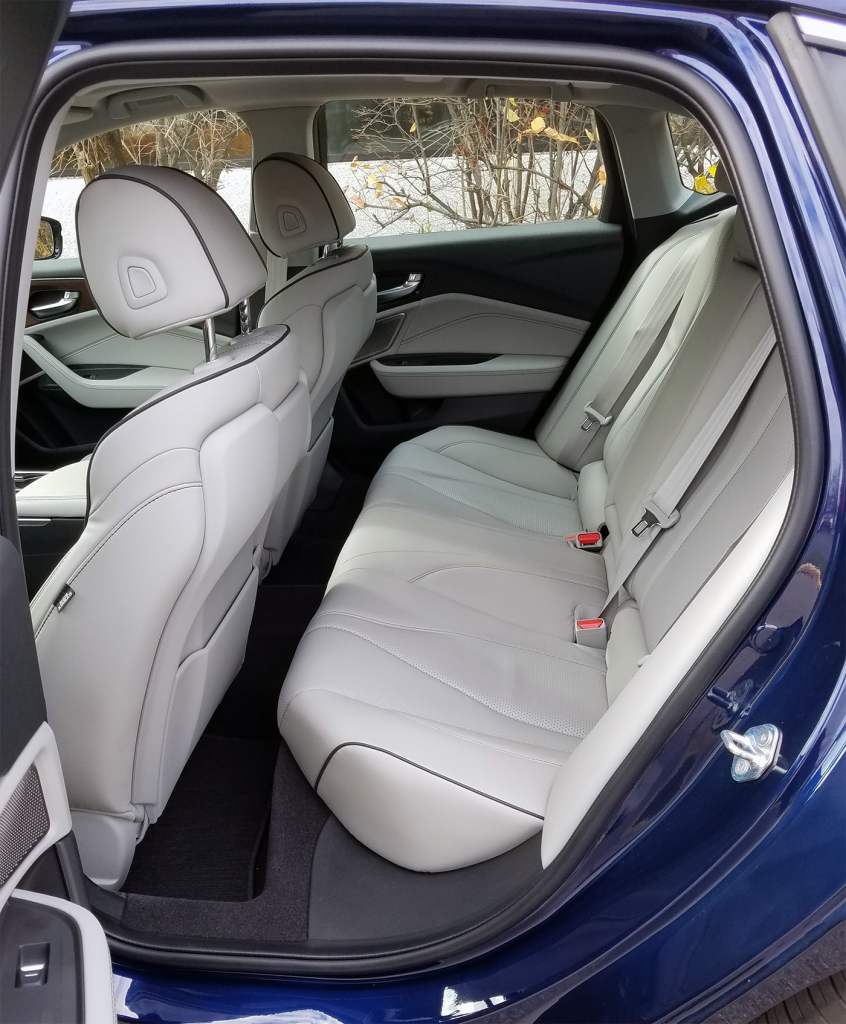
The front seats are adjusted all the way back in this photo, but even with them set further forward, the TLX’s rear seat is a bit cramped for tall passengers.
Underneath the skin is a body structure that has been made 50 percent more rigid overall and benefits from front and rear underfloor braces. The front suspension changes to double wishbones from MacPherson struts. In the latest version of SH-AWD, torque makes a speedier front-to-rear transfer when necessary, with up to 70 percent of all available twist available to the rear axle. The TLX Advance features standard adaptive damping in which a continuously adjustable valve in each damper raises or lowers fluid pressure based on sensor data, altering fluid flow rates within the tubes and softening or stiffening damping force as road conditions change.
An “Integrated Dynamics System”—Acura’s term for “Comfort, “Normal,” “Sport,” and new configurable “Individual” drive modes—influences things like throttle response, shift points, steering resistance, and damping. There’s subtle difference in driving feel between Comfort and Normal modes, but Sport brings out a clearer change in steering and suspension characteristics—though we wouldn’t go as far as calling the limit of the adaptive damping “race car-stiff” as Acura claims. The car rides quite well, even in Sport, and there’s enough steering feedback for drivers to feel sufficiently in touch with the road below. Handling is good, even in quick corners.
The 2.0-liter turbo 4-cylinder engine generates 272 horsepower at 6500 rpm and 280 lb-ft of torque at 1600-4500 rpm. That’s a little less horsepower than was available from the 3.5-liter V6 in the 2020 TLX Advance, but almost 5 percent more faster-acting torque. The engine is satisfyingly powerful for the vast majority of driving needs with the able assistance of the utterly smooth 10-speed automatic transmission. Sport brings out a clear change in shift points, delaying them to squeeze extra power from each range. The exhaust report can be a little bratty under acceleration, and in those moments undercuts the Acura premium-brand image. TLXs with SH-AWD are rated by the EPA at 21 mpg in the city, 29 mpg on the highway, and 24 combined. When this driver topped off after 64.6 miles, with 48 percent city-style operation, he saw 21.9 mpg.
Naturally, as the king of the pricing hill (at least until the Type S arrives), the Advance has the best of the standard equipment offered in the vehicle line. That includes things like a power moonroof, heated and ventilated front seats, wireless charging, 17-speaker Acura/ELS premium audio, satellite radio, navigation, dual-zone climate control, Wi-Fi hotspot, Apple CarPlay/Android Auto smartphone compatibility, AcuraLink connected services, 7-inch information display in the instrument cluster, collision mitigation and pedestrian detection with emergency braking, adaptive cruise control, lane-departure warning and lane-keeping assist, and blind-spot and rear cross-traffic monitors. Traffic-sign recognition and traffic-jam assist are newly standard for TLXs, too.
Test Drive: 2020 Alfa Romeo Giulia Ti Lusso
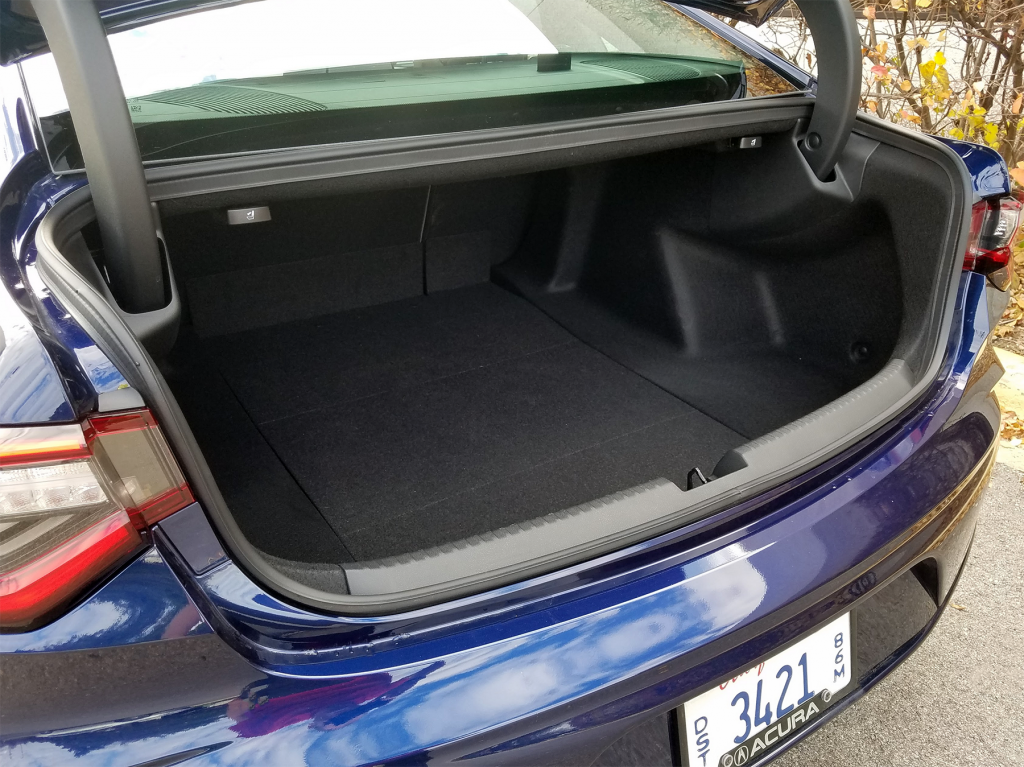
The TLX’s trunk space–13.5 cubic feet–is on par with most class rivals.
Beyond that, the Advance stands out from other models with the adaptive dampers, Pewter Gray Metallic machine finish for its 19-inch alloy wheels, LED puddle lights, power-folding exterior mirrors, rain-sensing windshield wipers, and windshield-wiper deicer. Inside are sport seats with perforated Milano premium leather; 16-way power front seats with power adjustments for lumbar support, thigh extension, and side bolsters; heated steering wheel and rear seats; open-pore wood trim on the console and door panels; head-up warning; surround-view camera system; and a 10.5-Inch head-up instrument display.
An airy, open-feeling cabin provides great driver vision. Attractive and plush front seats are decidedly comfortable. There’s plenty of head- and legroom in front; rear legroom is good but not outstanding, and headroom isn’t as good for tall folks. The big driveline hump rules out a third adult passenger in back. Door tops are thinly padded, but there’s lots of soft-surface material in other places.
I didn’t lose my mind trying to figure out how to input radio presets with the help of the “True Touchpad Interface.” This device is a bit more accurate than something like the late Lexus system—there’s no dragging a fingertip or manipulating a mouse across the active control area while trying to drive—but I still found myself sometimes wondering why a spot on the 10.2-inch display screen was not activating in response to where I thought I was touching the console pad. A padded handrest does a good job of keeping errant mitts from contacting the touchpad and unintentionally changing stations or screen views.
Meet the 2021 Consumer Guide Best Buys
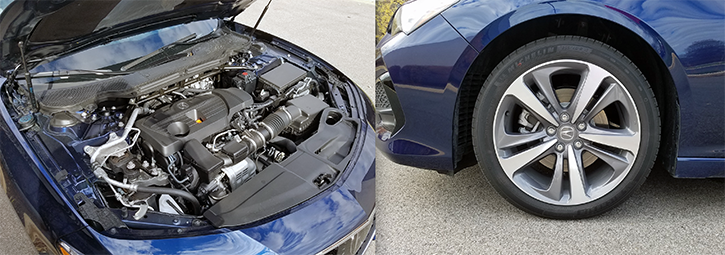
The TLX’s turbocharged 2.0-liter 4-cylinder puts out a healthy 272 horsepower. A high-performance Type S model is set to join the TLX lineup in spring 2021; it will be powered by a 355-hp turbocharged 3.0-liter V6. TLXs with all-wheel drive and the Advance Package come standard with 19-inch alloy wheels on Michelin Primacy all-season tires.
Cabin storage options are varied and usefully sized. Trunk capacity of 13.5 cubic feet is a slight decrease from before. The flat floor narrows quite a bit between the wheel houses. Rear 60/40 seats fold flat, with a smooth transition from trunk floor to retracted seats, but a bulkhead at the threshold constricts the opening somewhat. There’s some hidden storage in a foam organizer under the floor.
The TLX has a record of being Acura’s best-selling sedan. By being its own car for 2021, it should remain a car lots of people will want to own.
Indulgence Madness! A Gallery of Eighties Personal Luxury Car Ads
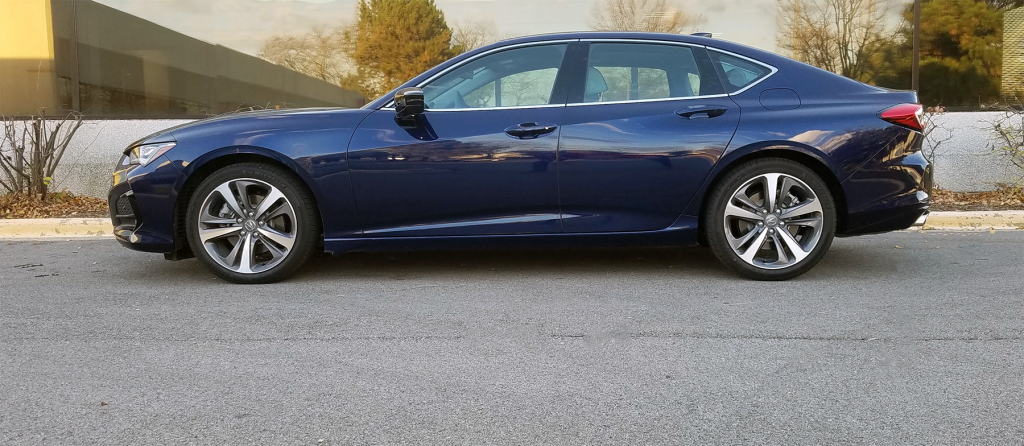
The redesigned-for-2021 TLX wears familiar Acura styling themes, but applies them to striking new long-hood/short-deck body proportions. In addition to its distinctive design, the new TLX offers athletic driving manners, a very nicely finished cabin, and a generous list of tech-forward features–it continues as a Consumer Guide Best Buy this year.
(Click below for enlarged images)
Listen to the very entertaining Consumer Guide Car Stuff Podcast
2021 Acura TLX Gallery
2021 Acura TLX
